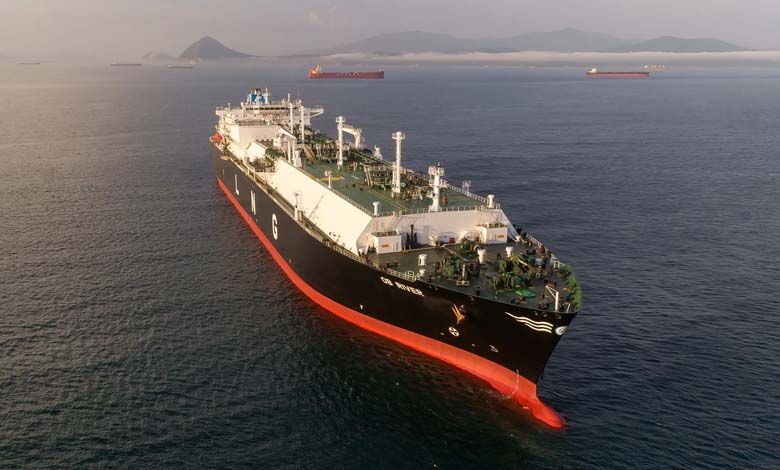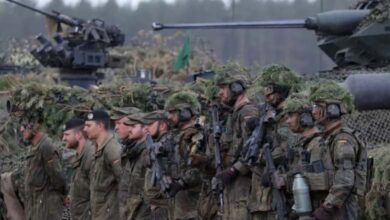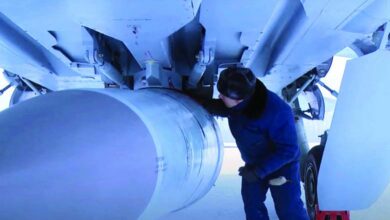“Shadow War”… Europe Plans an Attack on Russian “Ghosts”

Isolated and barely visible, a decrepit oil tanker, as long as two football fields, drifts quietly—a stark contrast to the waves of disruption it has sent across Europe.
This tanker, hidden under snow-covered trees in a Finnish bay, was seized by the country’s authorities last December in what was seen as a “new escalation” in the ongoing conflict between Moscow and the West. However, such interventions may soon become more frequent.
-
“Strategic ‘Toretsk’ in Russian Hands… Ukraine Faces Supply Line Crisis”
-
The “Orechnik” Surprise: The Russian “Terrifying” Missile Pulses with a Western Heart
Finnish authorities intercepted the Russian vessel Eagle S in a full-scale operation, suspecting it of sabotaging an undersea power link between Estonia and Finland.
The seizure of this vessel, which was carrying 100,000 barrels of oil from St. Petersburg, marked a pivotal moment, opening what appears to be a new front in the covert war between Russia and the West.
Currently, behind-the-scenes discussions are taking place among European countries regarding a large-scale operation to seize Moscow’s oil-exporting tankers in the Baltic Sea, according to two EU diplomats and two government officials who spoke to Politico.
-
Iran Mediates to Supply Houthis with Russian Anti-Ship Weapons
-
The White Whale: “Russian Spy” or Recreational Therapist?
At the same time, Europe is drafting new legislation to provide a legal basis for these actions.
Among the proposals under consideration is the use of international law to seize vessels on environmental or piracy grounds, officials said.
If those efforts fail, European countries may individually implement new national laws to collectively seize more ships on the high seas.
-
What do the colors of the Russian flag symbolize?
-
“The Russian Hell” shakes Ukraine… Learn about the “Doomsday” bomb
Opportunities and Challenges
Estonian Foreign Minister Margus Tsahkna stated: “Nearly 50% of sanctioned Russian oil trade passes through the Gulf of Finland”, adding: “There are environmental threats, and we have also suffered attacks on our undersea infrastructure.”
He continued: “The question now is: What can we do about these ships? We cannot shut down the entire sea, but we can take greater control. There are plenty of opportunities.”
These discussions reflect Europe’s growing frustration with Russia’s ability to bypass Western sanctions by relying on an ever-expanding “shadow fleet.”
-
“The Deadly Lake”.. The Ghost of the Cold War Haunts a Russian Region
-
The Ukraine War drains Russian resources and affects its influence in the Mediterranean
This fleet consists of aging vessels with unclear ownership and questionable insurance.
By exploiting this network, Moscow has managed to sustain a crucial financial lifeline for its war efforts in Ukraine, as oil and gas account for roughly half of the Kremlin’s revenue.
And all of this is happening right under Europe’s watch, in its own waters.
However, turning these new plans into action won’t be easy. According to experts and maritime law specialists interviewed by Politico, the European initiatives face legal hurdles, significant financial costs, and complex logistical challenges.
-
“Wagner” and Military Aircraft: What is the Reality of Russian Presence in Tunisia?
-
European Concerns Over Russian Plans to Establish a Naval Base in Libya
Tsahkna emphasized: “We need coordination; we must agree on how to implement these measures.”
Out of the Shadows
In 2022, the European Union imposed a ban on all Russian oil imports and, together with the G7, introduced a price cap on Moscow’s crude oil sales, aiming to squeeze Kremlin revenues following its military operation in Ukraine.
-
What are the implications and goals of the Gulf-Russian summit?
-
Washington strengthens its presence in northern Syria to counter Russian influence
But Russia quickly found ways to circumvent these restrictions. Today, its shadow fleet—often relying on dubious insurance firms to evade price caps—accounts for up to 17% of all oil tankers worldwide.
As a result: “The shadow fleet now transports more than 80% of total Russian crude oil,” said Isaac Levy, head of Russia-Europe relations at the Center for Research on Energy and Clean Air.
He added: “The Baltic Sea is the main artery of this illicit trade.”












